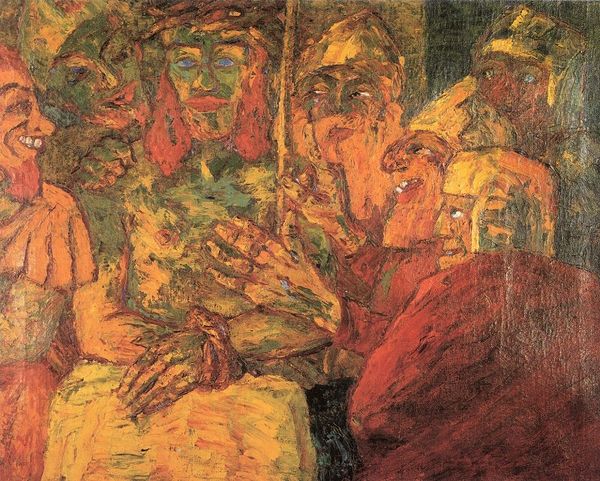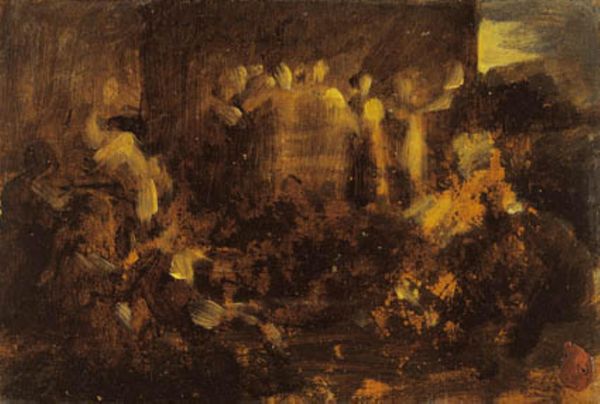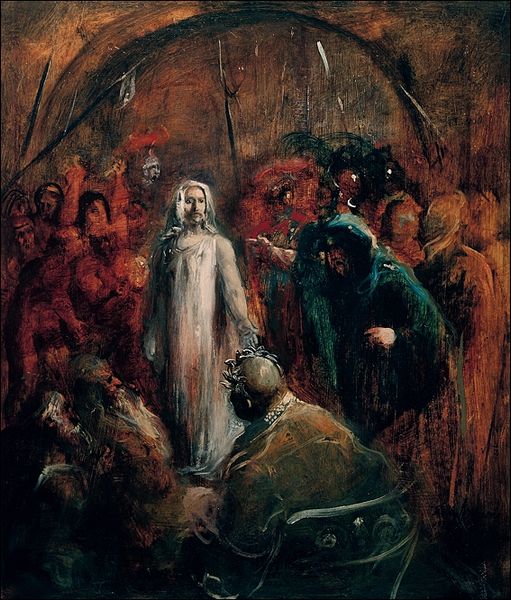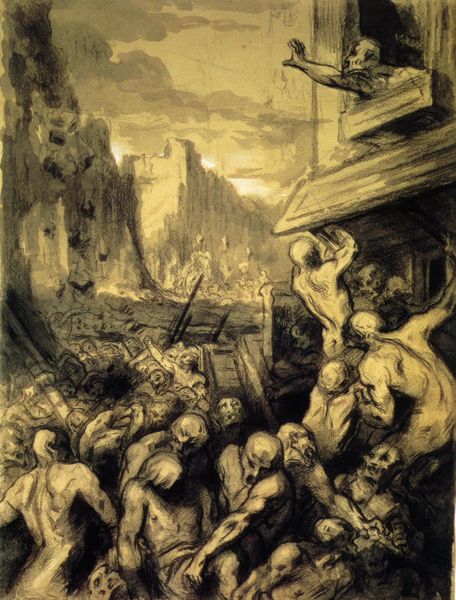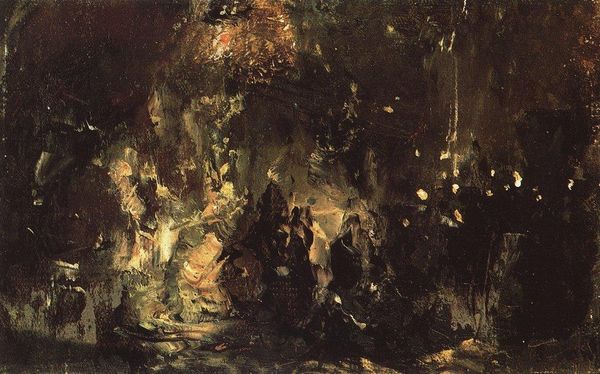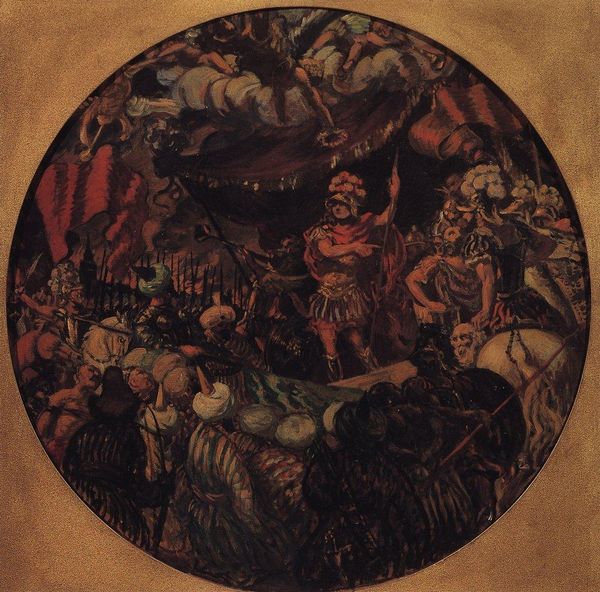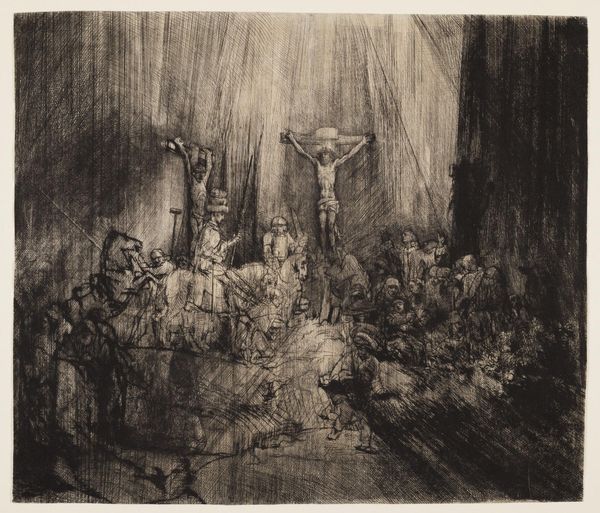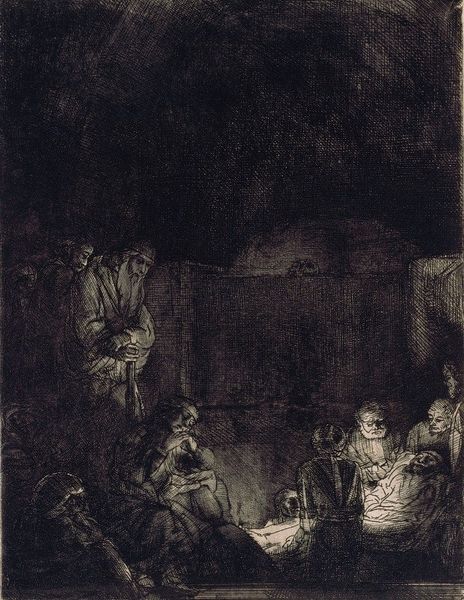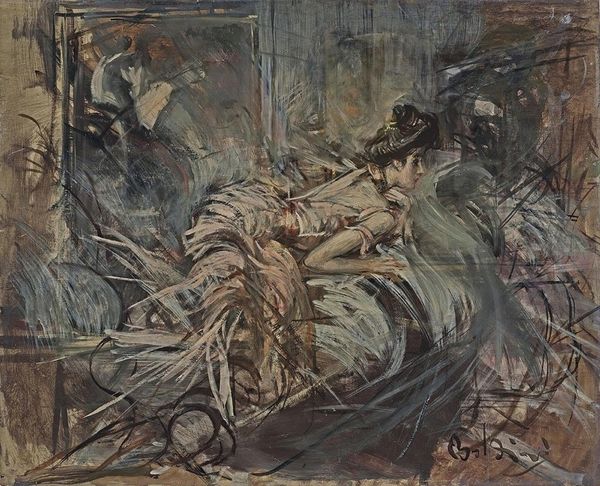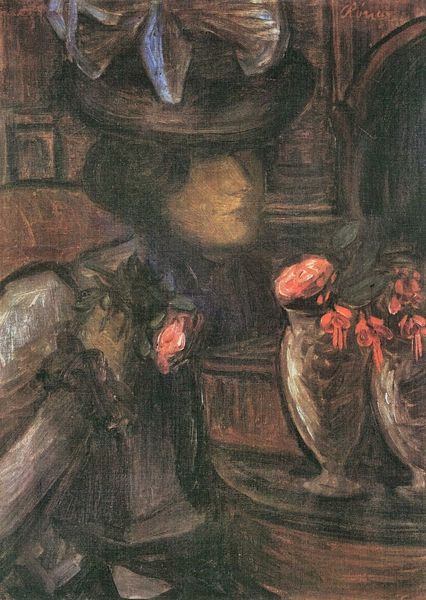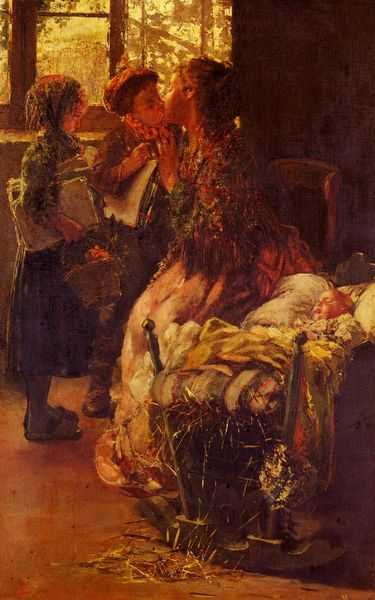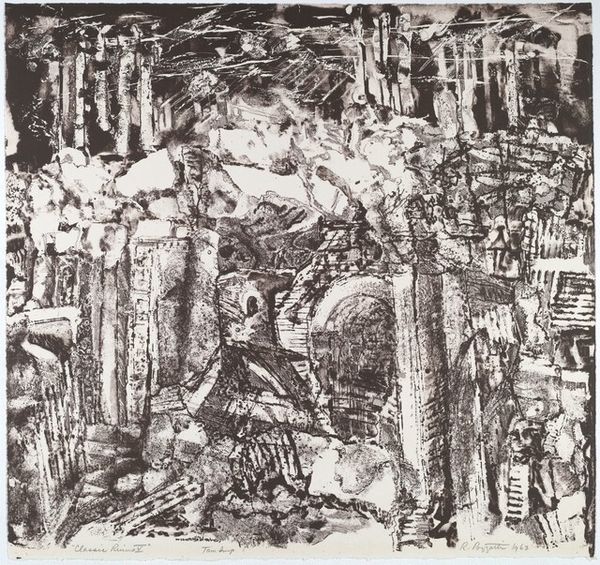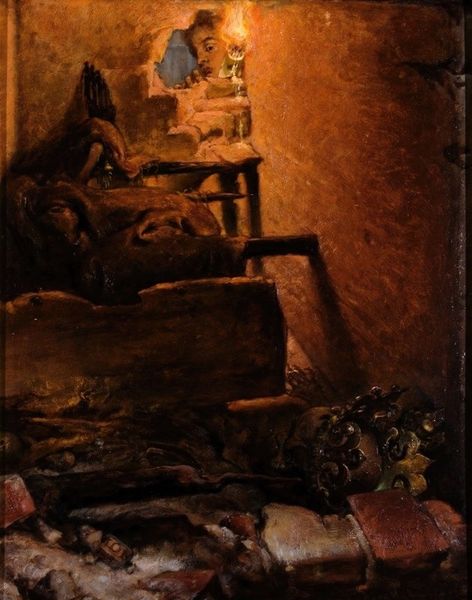
Copyright: Public domain
Paul Cézanne rendered "The Feast" with watercolor and graphite, presenting a scene shrouded in symbolic density. The motif of the feast, central to numerous cultural and religious traditions, immediately evokes the Last Supper or ancient bacchanals, hinting at themes of sacrifice, community, and indulgence. This iconography is reminiscent of earlier depictions of communal meals, such as those found in medieval tapestries or Renaissance frescoes. Consider, for example, the shift from the sacred, solemn gatherings to more carnivalesque celebrations, like those represented in Pieter Bruegel's works. The feast, laden with food and drink, becomes a stage for human drama, reflecting a deep-seated psychological need for both spiritual communion and earthly pleasure. Note the recurring motif of obscured faces, a reflection of the collective subconscious at play, where individual identities blur within the shared, often chaotic, experience of the feast. This non-linear progression of the symbol invites us to consider how it resurfaces, evolves, and takes on new meanings throughout history.
Comments
No comments
Be the first to comment and join the conversation on the ultimate creative platform.
